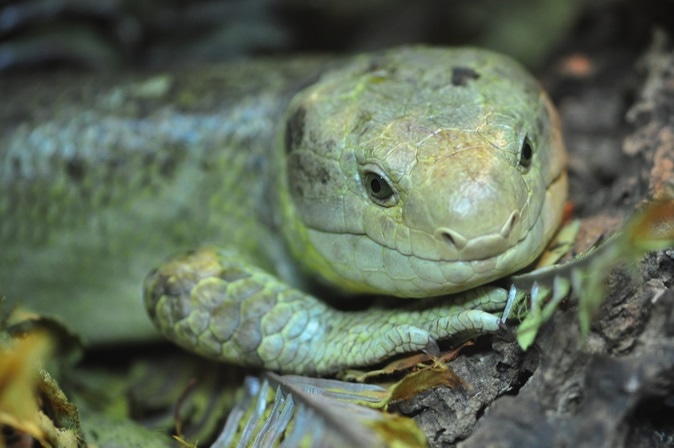A species of lizards has been found to have bright green blood. Researchers in their study published this Tuesday said that this finding could provide understanding in illnesses such as malaria and jaundice. The study was published in Science Advances.

Prehensile Tailed Skinks (Corucia zebrata), Image Credit: Yury Nevalenny / Shutterstock
The team of researchers came across these foot long skinks (genus Prasinohaema) found in New Guinea, an island off of Australia. These lizards have bright green blood, body, mucosa, mouths etc. Chris Austin, a biologist at Louisiana State University, has been studying these unique lizards for nearly 10 years now. Austin said that there is a large amount of green pigment in the lizard’s blood. This pigment overshadows the red blood cells and changes the colour of the blood. The lizards have green bones, muscles, tongues, mucosa and tissues. This green is contributed by biliverdin. Biliverdin is a toxic waste product of the body that is released in bile and excreted in stool in all animals. Biliverdin is produced when the red blood cells are broken down. In humans an equivalent is bilirubin that when accumulated leads to jaundice.
The researchers led by Zachary Rodriguez, a doctoral candidate in the Department of Biological Sciences at Louisiana State University, noted that at the levels of biliverdin that should have killed the lizards, these can live and perform their functions normally. This is a baffling find. More than one species of lizards have shown this tolerance for rising levels of biliverdin. Austin and his colleagues including Rodriguez and Susan Perkins, curator and professor at the Sackler Institute for Comparative Genomics and the Division of Invertebrate Zoology at the American Museum of Natural History, then went on to look at the DNA of 51 species of Australasian skinks. Of these six species had green blood. These green blooded lizards were not even related to each other and had their green blood as the only common factor.
The study results showed that the ancestors of the lizards had red blood. The green blood developed in separate lineages and four times independently. Austin explained that there is a “scenario of four independent origins of green blood,” which they would confirm with genetic work. The reason why these lizards prefer to be green is not yet known they say. They speculate that it could be to keep predators at bay making the lizards bad to taste. This was however negated when they tried to offer these green lizards to birds and the birds ate them up. Austin even went further to taste both the lizards himself and found that they tasted the same!
The team then speculated that the green could be a good camouflage. But this theory also did not work because they noted that several red blooded lizards were also green and some green blooded lizards were not green. They also speculated that this green blood could be protecting them from malaria. This is being studied at present Austin said. Austin also said that there are several other species of fish and frogs that have similar green blood. Altogether the presence of green blood remains rare in the animal kingdom they write.